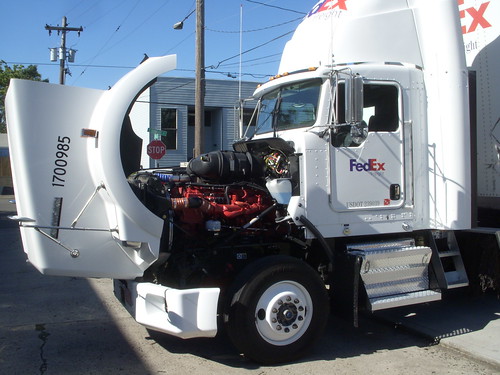Last time we discussed past and present perceptions of what makes a high mileage truck and why. This time, we’ll continue speaking about how technological advancements in the manufacture of tractor trailer parts have helped drivers stay confident about owning and buying used trucks.
Engine Evolution, Cont.
Changes such as more efficient air handling and cleaner combustion, electronically- controlled fuel systems and power cylinder components all give modern power plants clear advantages over engines from even just 10 years ago. Moreover, all the combinations of improved parts simplified analysis techniques of oil flow in the bearings.
Because of all this new technology, the tractor trailer made today can’t be happy unless it’s cranking out 150,000-200,000 miles a year. What do you bet that in the future, engine readouts will tell us when and where to change the truck’s oil and coolant to prevent it from ever getting low or the pressure getting too high? And if manufacturers pass on incorporating technology like this, you can bet developers of mobile computing applications will have one available soon for very little money. They already have several apps available now that are designed specifically to help truckers get more performance out of their tractors.
Improved Transmissions
Today, transmissions are more versatile, powerful and smoother than ever before. Most modern trucks are able to reach better levels of fuel economy because manufacturers are incorporating better bearings, seals and lubrication. The improvement here means better gas mileage, less engine wear and much longer intervals between rear end lubes.
Another big improvement to keeping trucks on the road was the innovation of soft damped clutches. These types of clutches isolate the drivetrain from damaging torsional vibration. Nearly every road hand with a few miles under their belt have felt the gut-shaking torsional vibration and understand the damage it can cause. With these changes, transmission warranties have been extended to 5 years/750,000 miles. Technology in design and manufacturing will continue to develop automated products and remove driver influence by improvements to automatic and synchronized shifting systems and automated mechanicals.
Rear End Revolutions
The trend in the last 15 years has been an increase of torque coming from the new engines. This challenged the rear end manufacturers to design and build products to withstand that power. Torque capacity went to all new highs as faster ratios were designed and implemented into new rear ends. Differential locks came into being for maximum traction in adverse driving conditions. Improved lube pumps and sealing systems helped reduce oil leakage problems to provide better protection against costly internal contamination. Add to this the fact that manufacturers fully expect axles attached to these rear ends to go to 1 million miles. If the used tractor you’re looking at has one of the newer rear end designs incorporated, you can be confident that it will be a performer well past 750,000 miles.
Next time we’ll have a look at more technology that helped keep engine damage to a minimum and mileage to a maximum for today’s drivers looking for a used but roadworthy rig. Stay tuned!

